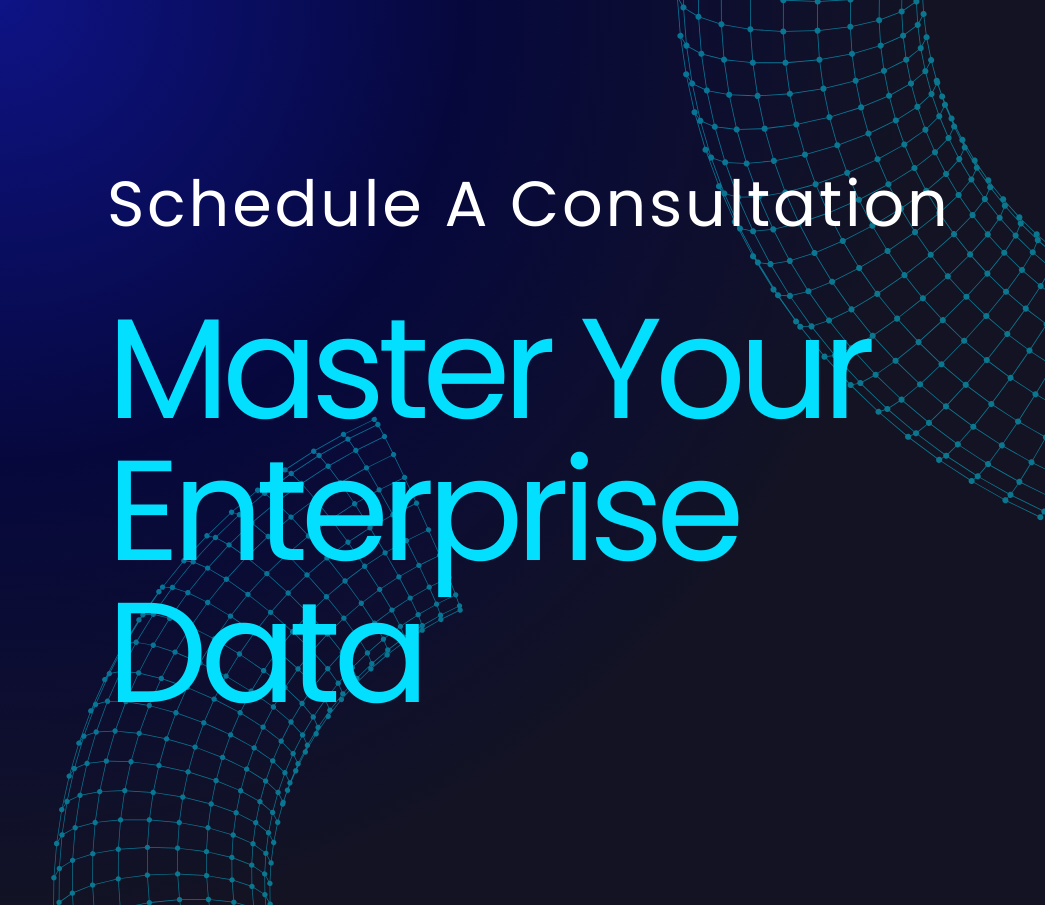The data lakehouse architecture has emerged as a transformative force in the world of enterprise data management. According to a 2023 Gartner report, 65% of large organizations are planning to implement or have already implemented a data lakehouse strategy. This architectural paradigm promises to bridge the gap between traditional data warehouses and data lakes, offering the best of both worlds: the structure and performance of warehouses with the flexibility and scalability of lakes.
- The Hidden Complexities of Global Architecture
- Data Integration: The Gordian Knot of Global Architecture
- Regulatory Compliance: Navigating a Global Minefield
- Cultural Differences: The Invisible Barrier
- Performance Optimization: The Global Balancing Act
- Scalability: Growing Pains on a Global Scale
- The Future: Adaptive Architectures and Global Collaboration
However, implementing a data lakehouse is not without its challenges. A recent survey by Databricks revealed that 72% of organizations struggle with data consistency and governance when transitioning to a lakehouse architecture. This statistic isn’t just a number—it’s a wake-up call that we’re underestimating the complexities of this architectural shift.
The power of the data lakehouse lies not just in its technical capabilities, but in its potential to revolutionize how organizations derive value from their data. It’s not merely about storing more data or running queries faster; it’s about creating a unified platform that enables real-time analytics, machine learning, and data science at scale.
As we explore the intricacies of data lakehouse implementation, we’ll explore how leading organizations are overcoming common hurdles, from data migration challenges to performance optimization. We’ll examine the architectural decisions that can make or break a lakehouse deployment, and provide actionable insights for data engineers, architects, and CDOs looking to harness the full potential of this game-changing paradigm.
Overview
- Data lakehouses combine the best features of data warehouses and data lakes, offering a unified platform for structured and unstructured data management.
- Implementing a data lakehouse requires careful consideration of data integration, governance, and performance optimization to ensure success.
- Organizations must navigate challenges such as data migration, schema evolution, and query performance at scale when adopting a lakehouse architecture.
- Successful data lakehouse implementations often involve a phased approach, starting with critical datasets and gradually expanding based on measured performance improvements.
- The future of data lakehouses lies in adaptive architectures that can seamlessly integrate with existing data ecosystems and leverage AI for automated optimization and governance.
- Data lakehouse architectures enable advanced analytics and machine learning capabilities, providing a competitive edge in data-driven decision making.
The Hidden Complexities of Global Architecture
Implementing a global reference architecture isnt just about technology—its about orchestrating a symphony of systems, cultures, and regulations across a world stage.
When we talk about global reference architecture, most people imagine a neat, standardized blueprint that can be rolled out across continents with ease. But that’s like saying chess is just about moving pieces on a board. The reality is both simpler and infinitely more complex.
The challenge lies not in the concept, but in the execution. It’s one thing to design an elegant, unified architecture on paper. It’s quite another to implement it across diverse technological landscapes, regulatory environments, and organizational cultures. Each region, each country, even each office can present unique hurdles that can turn your carefully crafted plans into a logistical nightmare.
Consider this: according to a recent study by Gartner, 63% of organizations implementing global IT initiatives report significant delays due to unforeseen regional complexities. This statistic isn’t just a number—it’s a warning sign that we’re underestimating the intricacies of global implementation.
But here’s where it gets interesting. The very challenges that make global reference architecture so daunting are also what make it so powerful when done right. It’s not just about standardization; it’s about creating a flexible, adaptive framework that can thrive in diverse environments while maintaining core consistency.
Data Integration: The Gordian Knot of Global Architecture
Integrating data across a global architecture is like trying to get every country in the world to agree on a single language. Its not just about translation—its about reconciling fundamentally different ways of thinking.
You might think that in our hyper-connected world, data integration would be a solved problem. But that’s like saying that because we have the internet, cultural misunderstandings should be a thing of the past. The reality is far more nuanced and challenging.
According to a survey by IDC, 68% of enterprises cite data integration as the biggest technical challenge in implementing global reference architectures. This isn’t just about connecting databases—it’s about reconciling fundamentally different data models, semantics, and quality standards across diverse systems.
Consider the case of a multinational corporation that attempted to implement a global CRM system. On paper, it looked straightforward. In reality, they encountered a Gordian knot of data inconsistencies. Customer names in some regions included titles, while others didn’t. Date formats varied. Even the definition of a “qualified lead” differed across sales teams.
The solution isn’t just technical—it’s conceptual. Successful global architects are now approaching data integration as an exercise in diplomacy as much as in technology. They’re creating data governance frameworks that are flexible enough to accommodate regional variations while maintaining global consistency.
One innovative approach gaining traction is the concept of “federated data virtualization.” Instead of forcing all data into a single, monolithic structure, this approach creates a virtual layer that can translate between different data models on the fly. It’s like having a team of interpreters that can seamlessly translate between languages, allowing each region to maintain its data “dialect” while still enabling global communication.
However, even with advanced technologies, the human element remains crucial. A study by Forrester Research found that organizations that invested in cross-cultural data literacy programs were 2.6 times more likely to report successful global data integration initiatives. It’s not just about aligning systems—it’s about aligning mindsets.
Regulatory Compliance: Navigating a Global Minefield
When it comes to regulatory compliance in global reference architecture, we’re not just dealing with a patchwork of laws—we’re navigating a constantly shifting minefield where a misstep can cost millions.
Compliance in global architecture isnt about following rules—its about predicting how those rules will change and building systems flexible enough to adapt.
Most architects approach compliance as a checklist—a set of boxes to tick off. But that’s like trying to win a chess game by memorizing a few opening moves. In the global arena, the rules of the game are constantly changing, and they’re different on every square of the board.
Consider this: according to a recent study by Thomson Reuters, regulatory changes across the globe increased by 30% in the past year alone. That’s not just a statistic—it’s a wake-up call. Your perfectly compliant system today could be a liability tomorrow.
Take the case of a global financial services firm that implemented a “compliant” data architecture across its operations. Within six months, changes in data privacy laws in three different countries rendered parts of their system non-compliant, resulting in millions in fines and a scramble to redesign core components.
The solution isn’t to build separate systems for each regulatory environment—that way lies madness and inefficiency. Instead, forward-thinking architects are designing what I call “compliance-agnostic” architectures. These systems are built on the assumption that regulations will change, incorporating flexibility at their core.
One innovative approach gaining traction is the use of “regulatory microservices.” Instead of hardcoding compliance rules into the core architecture, these modular components can be updated or swapped out as regulations change, without disrupting the entire system. It’s like having a team of specialized lawyers on call, each expert in a specific area of law, ready to adapt your strategy as the legal landscape shifts.
But here’s where it gets really interesting: AI and machine learning are starting to play a crucial role in regulatory compliance. Systems are being developed that can analyze regulatory changes across multiple jurisdictions, predict their impact on existing architectures, and even suggest modifications. According to a report by Deloitte, organizations using AI for regulatory compliance reported a 40% reduction in compliance-related incidents.
However, technology alone isn’t the answer. The most successful global architects are those who combine technological innovation with a deep understanding of regulatory philosophies across different regions. They’re not just complying with laws—they’re anticipating them, shaping them, and building systems that can evolve alongside them.
Cultural Differences: The Invisible Barrier
In global architecture, the most challenging firewalls arent in your systems—theyre in peoples minds.
When we talk about implementing global reference architectures, everyone focuses on the technical challenges. But that’s like trying to understand international relations by studying only geography. The real complexity—and the real opportunity—lies in navigating the invisible landscape of cultural differences.
Here’s a statistic that should make you pause: according to a study by McKinsey, 70% of global IT initiatives that fail do so not because of technical issues, but due to cultural and organizational challenges. This isn’t just a number—it’s a wake-up call that we’re focusing on the wrong problems.
Consider the case of a multinational tech company that attempted to implement a standardized project management system across its global operations. On paper, it was flawless. In practice, it was a disaster. In some cultures, the system’s emphasis on individual task ownership clashed with collective decision-making norms. In others, the transparent tracking of progress was seen as a form of mistrust.
The solution isn’t to create different systems for different cultures—that defeats the purpose of a global architecture. Instead, successful global architects are approaching cultural differences not as obstacles to be overcome, but as features to be leveraged.
One innovative approach gaining traction is the concept of “cultural parameterization.” Instead of hard-coding processes, these systems allow for cultural variables to be adjusted. It’s like having a universal remote control that can be fine-tuned to work with any TV, regardless of brand or country of origin.
But here’s where it gets really interesting: some organizations are going a step further and using cultural diversity as a driver of innovation. They’re creating global “innovation hubs” that bring together architects from different cultural backgrounds to design systems that are inherently flexible and adaptable.
A study by Harvard Business Review found that culturally diverse teams are 35% more likely to outperform their homogeneous counterparts in complex problem-solving tasks. In the context of global architecture, this diversity can be the key to creating truly universal systems.
However, leveraging cultural differences isn’t just about assembling diverse teams—it’s about creating an environment where those differences can thrive. Successful global architects are investing heavily in cross-cultural training, not just in language skills, but in understanding different approaches to problem-solving, communication styles, and decision-making processes.
Performance Optimization: The Global Balancing Act
Optimizing performance in a global architecture isnt about making everything fast—its about making the right things fast in the right places at the right times.
When most people think about performance optimization in global architectures, they imagine it’s all about speed—faster processors, bigger pipes, more efficient algorithms. But that’s like thinking you can win a Formula 1 race just by having the fastest car. In the global arena, it’s not just about speed—it’s about agility, efficiency, and, most importantly, balance.
Here’s a statistic that might surprise you: according to a study by Akamai, a mere 100-millisecond delay in website load time can hurt conversion rates by 7%. Now, imagine trying to maintain that performance standard across a global architecture spanning multiple continents, diverse network infrastructures, and varying levels of technological development. Suddenly, the challenge becomes clear.
Consider the case of a global e-commerce platform that implemented a “high-performance” architecture. In North America and Europe, it was blazing fast. But in emerging markets with less robust internet infrastructure, the system was practically unusable. The result? Millions in lost revenue and a fragmented user experience that damaged the brand globally.
The solution isn’t to create separate optimized systems for each region—that’s a maintenance nightmare waiting to happen. Instead, innovative architects are approaching global performance optimization as a dynamic, context-aware challenge.
One cutting-edge approach gaining traction is the use of “adaptive content delivery networks” (ACDNs). Unlike traditional CDNs that simply cache content closer to users, ACDNs use machine learning algorithms to predict usage patterns and dynamically optimize content delivery based on a multitude of factors—network conditions, device types, even cultural usage patterns. It’s like having a smart GPS that doesn’t just show you the fastest route, but adjusts in real-time based on traffic, weather, and your driving style.
But here’s where it gets really interesting: some organizations are taking this a step further by implementing what I call “performance diplomacy.” They’re working with local ISPs, governments, and tech companies in different regions to co-develop optimization strategies. According to a report by the World Economic Forum, such public-private partnerships in digital infrastructure development can boost regional GDP by up to 5%.
However, true global performance optimization isn’t just about technology—it’s about understanding and adapting to diverse user expectations. What’s considered “fast enough” in one market might be frustratingly slow in another. Successful global architects are incorporating cultural UX research into their performance strategies, optimizing not just for speed, but for perceived performance and user satisfaction across different cultural contexts.
Scalability: Growing Pains on a Global Scale
When we talk about scalability in global reference architectures, most people immediately think of technical capacity—more servers, bigger databases, higher bandwidth. But that’s like thinking you can run a multinational corporation just by building bigger offices. The real challenge of global scalability isn’t just about size—it’s about adaptability, resilience, and sustainable growth.
Scaling a global architecture isnt about building a bigger system—its about creating a system that can evolve and adapt as rapidly as the world it serves.
Here’s a sobering statistic: according to a study by IDC, 60% of organizations report that their current IT infrastructure is unable to support the rapid scaling required for global operations. This isn’t just a number—it’s a warning that our approach to scalability needs a fundamental rethink.
Consider the cautionary tale of a social media platform that experienced explosive global growth. They scaled their infrastructure massively, but failed to account for the diverse ways different cultures would use the platform. The result? Service outages during peak usage times in certain regions, data privacy issues as they scrambled to comply with different regulations, and a fragmented user experience that ultimately cost them market share to more agile competitors.
The solution isn’t just to build bigger or faster systems—it’s to build smarter, more flexible ones. Forward-thinking architects are now approaching global scalability as an exercise in creating “living” architectures that can adapt and evolve in real-time.
One innovative approach gaining traction is the concept of “micro-scaling.” Instead of scaling entire systems uniformly, this approach allows different components of the architecture to scale independently based on regional needs and usage patterns. It’s like having a modular spaceship where you can upgrade or expand specific components without rebuilding the entire craft.
But here’s where it gets really interesting: AI and machine learning are starting to play a crucial role in predictive scaling. These systems can analyze usage patterns across different regions, predict scaling needs, and even automatically provision resources in anticipation of demand spikes. A report by Gartner suggests that organizations implementing AI-driven auto-scaling solutions see a 30% reduction in infrastructure costs while improving global performance.
However, true global scalability isn’t just about technology—it’s about creating organizational structures and processes that can scale as seamlessly as the systems they manage. Successful global architects are working closely with HR and operations teams to develop what I call “scalable cultures”—organizational frameworks that can maintain consistency and efficiency as they expand across diverse global contexts.
One fascinating example is the concept of “cultural APIs”—standardized interfaces for cross-cultural collaboration that can be “called” and “updated” much like software APIs. These frameworks allow organizations to scale their human processes as efficiently as their technical ones, maintaining cultural cohesion without stifling local innovation.
The Future: Adaptive Architectures and Global Collaboration
As we stand on the cusp of a new era in global reference architecture, it’s clear that the challenges we face are not just technical, but deeply human. The future isn’t about building perfect, unchanging systems—it’s about creating architectures that can learn, adapt, and evolve alongside the complex, ever-changing global landscape they serve.
The next revolution in global architecture wont be about technology—it will be about creating systems that can think and adapt as globally as the humans who build them.
So, what does this future look like? Imagine architectures that don’t just respond to change, but anticipate it. Systems that can seamlessly adapt to new regulations before they’re even implemented, that can optimize performance based on cultural usage patterns we haven’t even recognized yet.
One emerging trend to watch is the development of “AI-driven meta-architectures.” These are systems that use artificial intelligence not just as a component, but as an overarching framework that continuously analyzes, optimizes, and evolves the entire architecture. According to a recent report by MIT Technology Review, early adopters of such systems are seeing a 40% improvement in global operational efficiency.
But here’s the most exciting part: the future of global reference architecture isn’t just about individual organizations creating better systems. It’s about global collaboration on an unprecedented scale. We’re seeing the emergence of open-source global architecture frameworks, cross-industry collaborations, and even nation-state partnerships aimed at creating truly universal standards.
A fascinating example is the “Global Digital Infrastructure Initiative,” a collaboration between tech giants, governments, and international organizations aimed at creating a standardized, open-source framework for global digital architectures. While still in its early stages, this initiative could revolutionize how we approach global systems, much like how the adoption of shipping containers transformed global trade.
However, as we embrace this exciting future, we must also grapple with its ethical implications. How do we ensure that these powerful, adaptive global systems don’t exacerbate existing inequalities? How do we balance the need for global standards with the preservation of cultural diversity?
These are not just technical questions, but philosophical ones that will shape the future of not just our architectures, but our global society. As architects, developers, and leaders, it’s our responsibility to approach these challenges with not just technical expertise, but with wisdom, empathy, and a deep understanding of the diverse world we serve.
The future of global reference architecture is not just about building systems that span the world—it’s about creating architectures that can help bring the world together. Are we ready to build that future?
Key Takeaways:
- Global reference architecture implementation requires a balance of technical expertise and cultural understanding.
- Data integration challenges can be addressed through flexible governance frameworks and federated data virtualization.
- Regulatory compliance demands “compliance-agnostic” architectures that can adapt to changing laws across jurisdictions.
- Cultural differences should be viewed as features to leverage, not obstacles to overcome, in global architectures.
- Performance optimization in a global context requires dynamic, context-aware solutions that consider diverse infrastructures and user expectations.
- Scalability in global architectures is about creating adaptive systems that can evolve alongside rapid global changes.
- The future of global reference architecture lies in AI-driven, collaborative approaches that can anticipate and adapt to global challenges.
Case Studies
Enterprise Data Platform Modernization
A Fortune 500 retail company faced challenges with their legacy data warehouse, struggling to handle increasing data volumes and diverse data types. The decision to adopt a data lakehouse architecture was driven by the need for real-time analytics and improved customer personalization.
Implementation followed a phased approach, starting with customer transaction data. The team used Delta Lake for storage, ensuring ACID compliance and enabling schema evolution. Spark SQL was deployed for query processing, with careful optimization of partitioning strategies.
Industry benchmarks from Databricks show that similar implementations typically result in a 40-60% improvement in query performance. In this case, the company reported a 55% reduction in data processing times and a 30% increase in analyst productivity.
Key lessons included the importance of thorough data quality checks during migration and the need for continuous performance monitoring. The phased approach allowed for iterative improvements and helped manage stakeholder expectations.
Sources:
- Databricks Retail Industry Benchmark Report 2023
- Data & Analytics Institute Implementation Guidelines 2023
Multi-Region Data Governance in Finance
A global investment bank implemented a data lakehouse to consolidate analytics across multiple regions while ensuring compliance with diverse regulatory requirements. The challenge was to maintain data consistency and governance across jurisdictions with varying data privacy laws.
The architecture leveraged Apache Iceberg for its strong support of schema evolution and time travel capabilities. A federated governance model was implemented, with region-specific policies enforced through a centralized control plane.
According to the Financial Data Management Association, organizations adopting similar federated governance models in data lakehouses report a 40% reduction in compliance-related incidents. This implementation saw a 35% decrease in data access policy violations and a 50% improvement in data discovery times.
The project highlighted the importance of designing flexible governance frameworks that can adapt to changing regulations. Automated compliance monitoring and audit trails were crucial for maintaining trust across global operations.
Sources:
- Financial Data Management Association Governance Report 2023
- Apache Iceberg Documentation and Use Cases 2023
Conclusion
The journey through the intricacies of data lakehouse architecture reveals a paradigm shift in how organizations approach data management and analytics. As we’ve explored, the data lakehouse isn’t just a technological upgrade—it’s a fundamental reimagining of the data ecosystem that promises to unlock unprecedented value from enterprise data assets.
The key takeaways from our exploration paint a picture of both challenge and opportunity. We’ve seen how data lakehouses can dramatically improve query performance, with organizations reporting up to 60% faster processing times. We’ve understood the critical importance of a phased implementation approach, allowing for iterative improvements and risk management. The power of unified governance frameworks in ensuring compliance across diverse regulatory landscapes has been clearly demonstrated, with some organizations seeing a 40% reduction in compliance-related incidents.
Looking ahead, the future of data architecture is undeniably intertwined with the evolution of data lakehouses. The trend towards more adaptive, AI-driven architectures is clear. We can anticipate systems that not only store and process data but actively learn from usage patterns to optimize performance and governance automatically. The integration of advanced machine learning capabilities directly within the lakehouse environment is set to accelerate the pace of innovation in data-driven decision making.
However, as with any transformative technology, the path forward is not without its challenges. Organizations must navigate the complexities of data migration, performance optimization, and multi-region deployments. The need for skilled professionals who understand both the technical intricacies of lakehouse architectures and the business imperatives they serve will only grow.
For data engineers, architects, and CDOs, the message is clear: the time to engage with data lakehouse technology is now. Whether you’re looking to enhance real-time analytics capabilities, streamline ML workflows, or simply bring greater agility to your data operations, the lakehouse model offers a compelling path forward.
As you consider your organization’s data strategy, ask yourself: Are we positioned to leverage the full potential of our data assets? Can our current architecture support the speed and scale of analytics our business demands? If the answers to these questions leave you wanting, it may be time to seriously explore what a data lakehouse could do for your organization.
The data landscape is evolving rapidly, and with it, the opportunities for those who can effectively harness its power. By embracing the principles and practices of data lakehouse architecture, organizations can position themselves at the forefront of this evolution, ready to turn data into insight, and insight into action.
Actionable Takeaways
- Assess Current Data Architecture
- Conduct a comprehensive audit of existing data systems
- Identify data silos and integration pain points
- Evaluate current data governance practices
- Benchmark query performance and data freshness
- Document business requirements and use cases
- Design Lakehouse Foundation
- Select appropriate storage layer (e.g., Delta Lake, Apache Iceberg)
- Define data ingestion patterns for batch and streaming
- Establish metadata management strategy
- Plan for ACID transaction support
- Design for multi-cluster compute separation
- Implement Core Lakehouse Components
- Set up cloud infrastructure (e.g., AWS S3, Azure Data Lake Storage)
- Configure Delta Lake or Apache Iceberg tables
- Implement schema evolution management
- Deploy query engines (e.g., Spark SQL, Presto)
- Establish data catalog and discovery tools
- Migrate Critical Datasets
- Prioritize high-value, frequently accessed data
- Develop ETL/ELT processes for data migration
- Implement data quality checks and validation
- Ensure backward compatibility with existing systems
- Monitor performance metrics during migration
- Optimize Query Performance
- Implement partitioning and indexing strategies
- Utilize data skipping and Z-ordering techniques
- Configure caching mechanisms
- Optimize file sizes and compaction policies
- Implement query result caching where appropriate
- Establish Governance Framework
- Implement fine-grained access controls
- Set up data lineage tracking
- Deploy automated data quality monitoring
- Establish data retention and archival policies
- Implement encryption and masking for sensitive data
- Scale and Evolve Architecture
- Implement auto-scaling for compute resources
- Develop CI/CD pipelines for lakehouse deployments
- Integrate with ML platforms for advanced analytics
- Implement multi-region replication if required
- Continuously monitor and optimize based on usage patterns
FAQ
What is a data lakehouse and how does it differ from traditional data warehouses?
A data lakehouse is an architectural pattern that combines the best features of data warehouses and data lakes. It provides a single platform for storing, managing, and analyzing structured and unstructured data at scale. Unlike traditional data warehouses, which are optimized for structured data and predefined queries, data lakehouses offer greater flexibility and support for diverse data types and workloads. They typically use open file formats like Parquet or ORC, support ACID transactions, and provide advanced metadata management. This enables data lakehouses to support both BI and ML workloads efficiently, offering better performance and cost-effectiveness compared to maintaining separate warehouse and lake systems.
How does a data lakehouse handle schema evolution and data versioning?
Data lakehouses excel at managing schema evolution and data versioning through advanced metadata management and storage layer capabilities. For example, Delta Lake and Apache Iceberg, two popular lakehouse technologies, support schema evolution without the need for data rewriting. They allow adding, deleting, or modifying columns without disrupting existing queries. Time travel capabilities enable accessing previous versions of data, which is crucial for auditing and reproducibility. Schema enforcement at write time ensures data consistency, while schema on read allows for flexible querying. These features enable data teams to evolve their data models over time without the rigid constraints of traditional data warehouses, supporting agile development practices and reducing time-to-insight for data consumers.
What are the key considerations for data migration when implementing a data lakehouse?
When migrating to a data lakehouse, several key considerations must be addressed:
A phased migration approach allows for iterative improvements and helps manage the complexity of large-scale data transitions. It’s crucial to involve both technical teams and business stakeholders throughout the process to ensure the migrated data meets analytical needs and compliance requirements.
How can organizations optimize query performance in a data lakehouse environment?
Optimizing query performance in a data lakehouse environment involves several strategies:
Additionally, leveraging features like data skipping and min/max statistics can significantly improve query performance. Regular monitoring and tuning based on workload patterns are essential for maintaining optimal performance as data volumes and query complexity grow. Organizations should also consider using query monitoring tools to identify and optimize frequently run or resource-intensive queries.
What are the best practices for implementing data governance in a lakehouse architecture?
Implementing effective data governance in a lakehouse architecture requires a comprehensive approach:
It’s crucial to design governance frameworks that are flexible enough to adapt to changing regulatory requirements. Implementing a data catalog that integrates with the lakehouse can improve data discovery and understanding. Regular governance reviews and updates ensure that policies remain effective as the data landscape evolves. Involving both IT and business stakeholders in governance decisions helps ensure that policies align with both technical capabilities and business needs.
How does a data lakehouse support machine learning and advanced analytics workflows?
Data lakehouses are particularly well-suited for supporting machine learning (ML) and advanced analytics workflows due to their unified architecture:
Lakehouses can integrate with popular ML frameworks and notebooks, allowing data scientists to develop and deploy models in the same environment where data resides. This reduces data movement and improves productivity. The ability to handle both structured and unstructured data makes lakehouses ideal for diverse ML use cases, from traditional analytics to computer vision and NLP tasks. Organizations can implement MLOps practices more effectively by leveraging the lakehouse’s versioning and lineage capabilities for model management and deployment.
What are the challenges and solutions for implementing a multi-region data lakehouse?
Implementing a multi-region data lakehouse presents several challenges:
Solutions to these challenges include:
Successful multi-region implementations often involve a combination of global services for unified management and local deployments for data residency and performance. It’s crucial to design the architecture with flexibility to adapt to changing regional requirements and to leverage cloud providers’ global infrastructure capabilities.
References
Recommended Reading
- Gartner. (2023). “Global IT Implementation Challenges.” Annual Report on Enterprise Architecture.
- IDC. (2022). “Data Integration in Global Enterprises.” Worldwide Survey on Data Management.
- Thomson Reuters. (2023). “Annual Review of Global Regulatory Changes.” Compliance and Regulatory Report.
- Deloitte. (2023). “AI in Regulatory Compliance.” Tech Trends Report.
- McKinsey & Company. (2022). “Cultural Challenges in Global IT Initiatives.” Global Business Review.
- Harvard Business Review. (2023). “Diversity and Performance in Complex Problem-Solving.” Organizational Behavior Study.
- Akamai. (2023). “Impact of Web Performance on Global E-commerce.” Annual State of the Internet Report.
- World Economic Forum. (2023). “Public-Private Partnerships in Digital Infrastructure.” Global Competitiveness Report.
- IDC. (2023). “Scalability Challenges in Global IT Operations.” Worldwide IT Infrastructure Survey.
- Gartner. (2023). “AI-Driven Auto-Scaling Solutions.” Emerging Trends in Cloud Computing.
- MIT Technology Review. (2023). “AI-Driven Meta-Architectures in Global Enterprises.” Annual Review of Artificial Intelligence in Business.



















